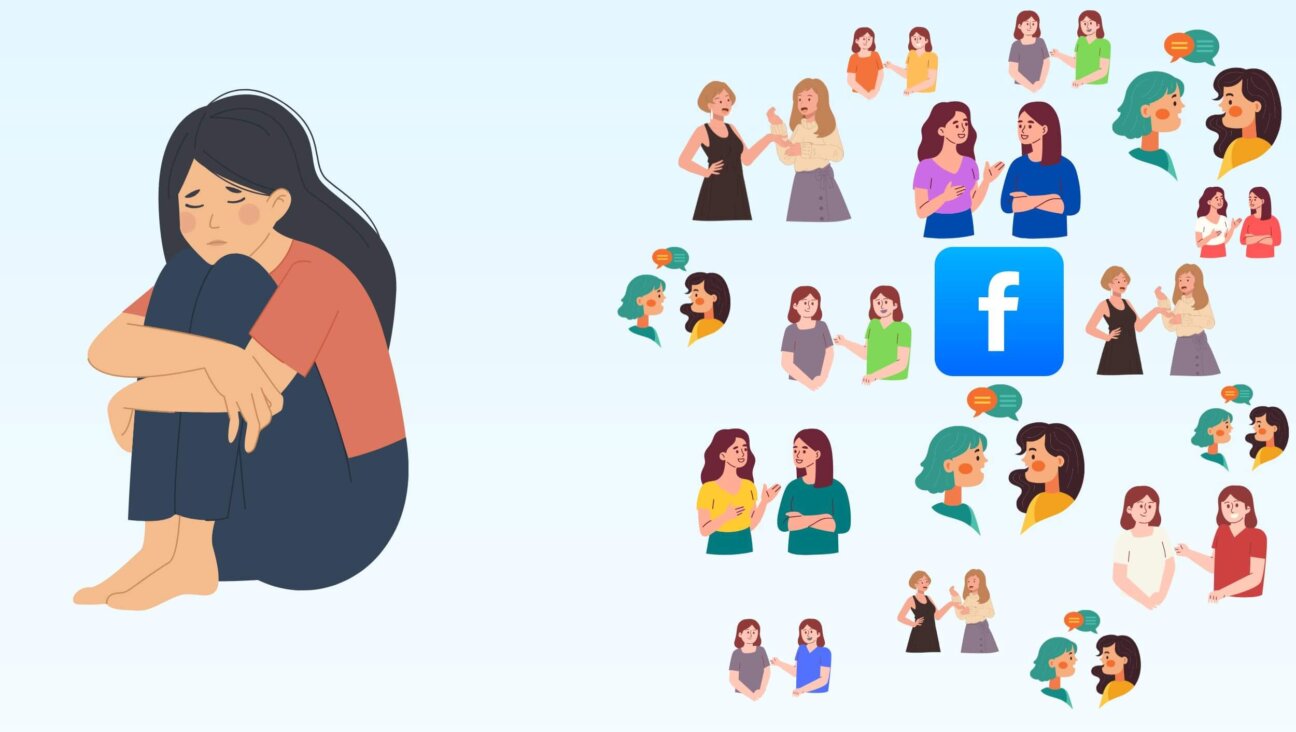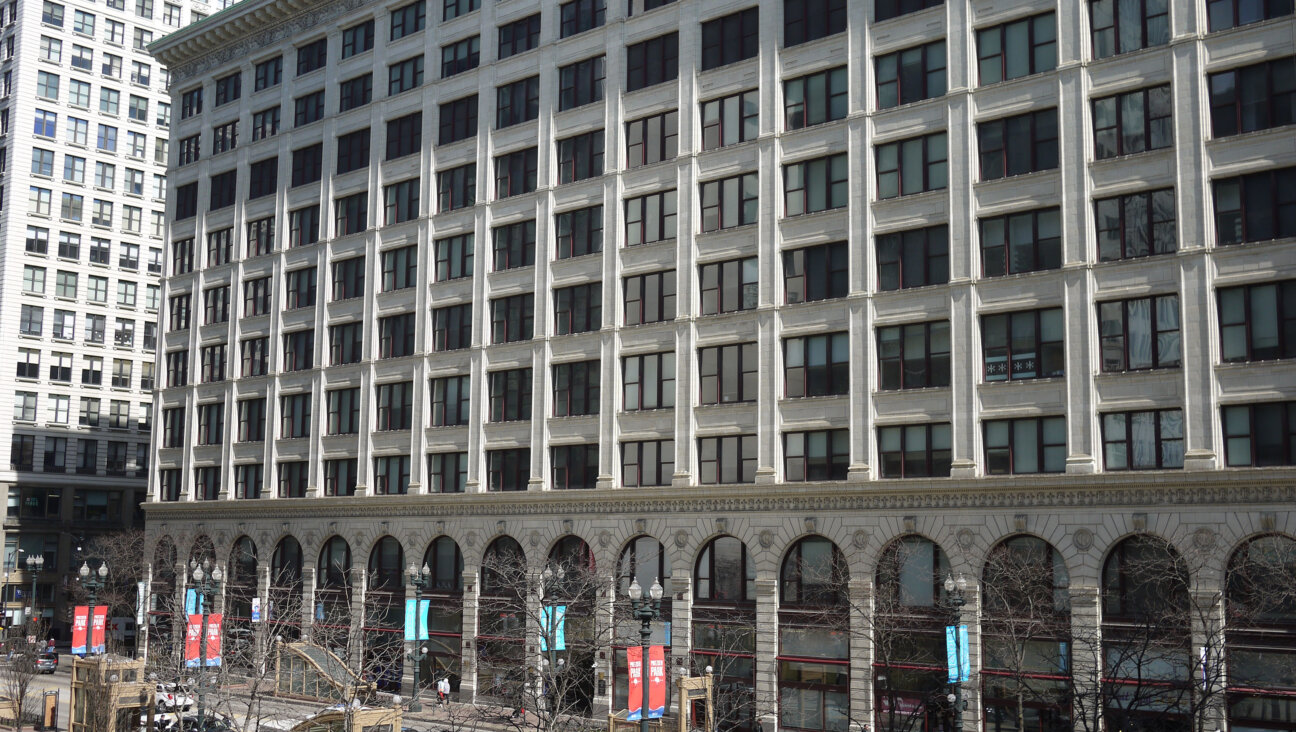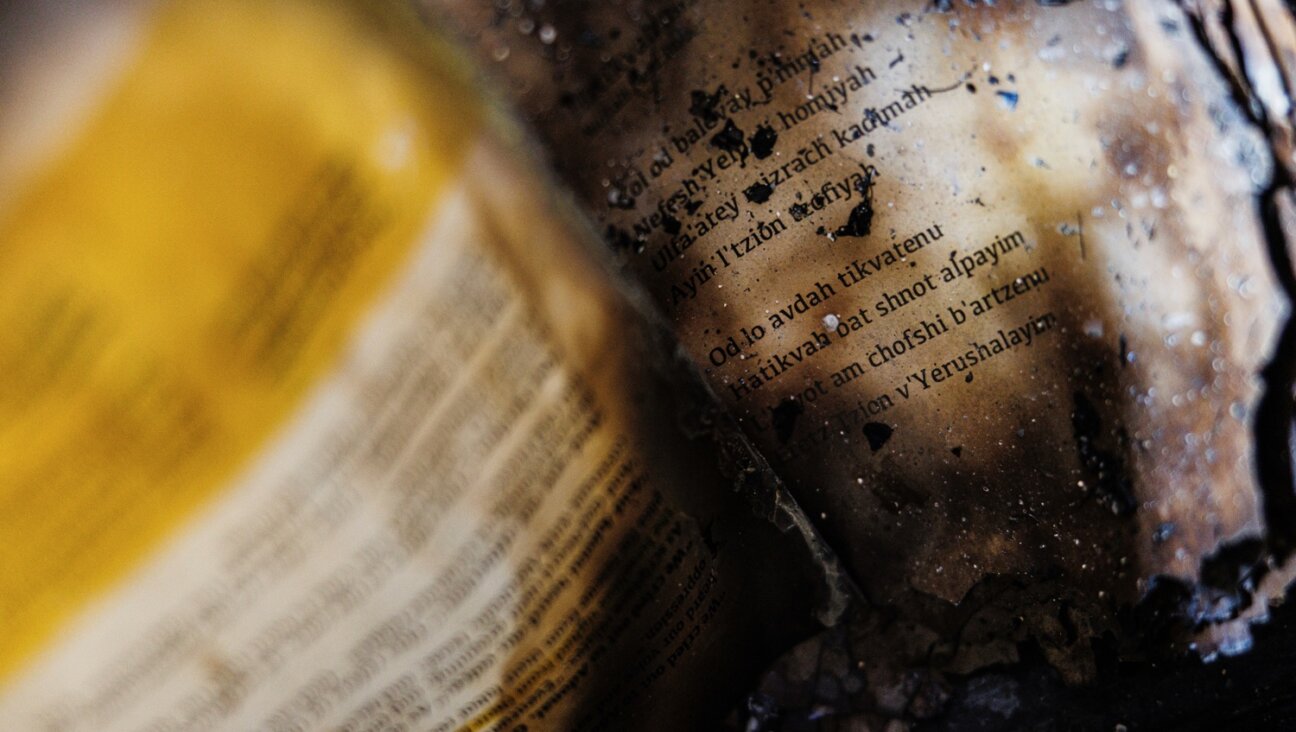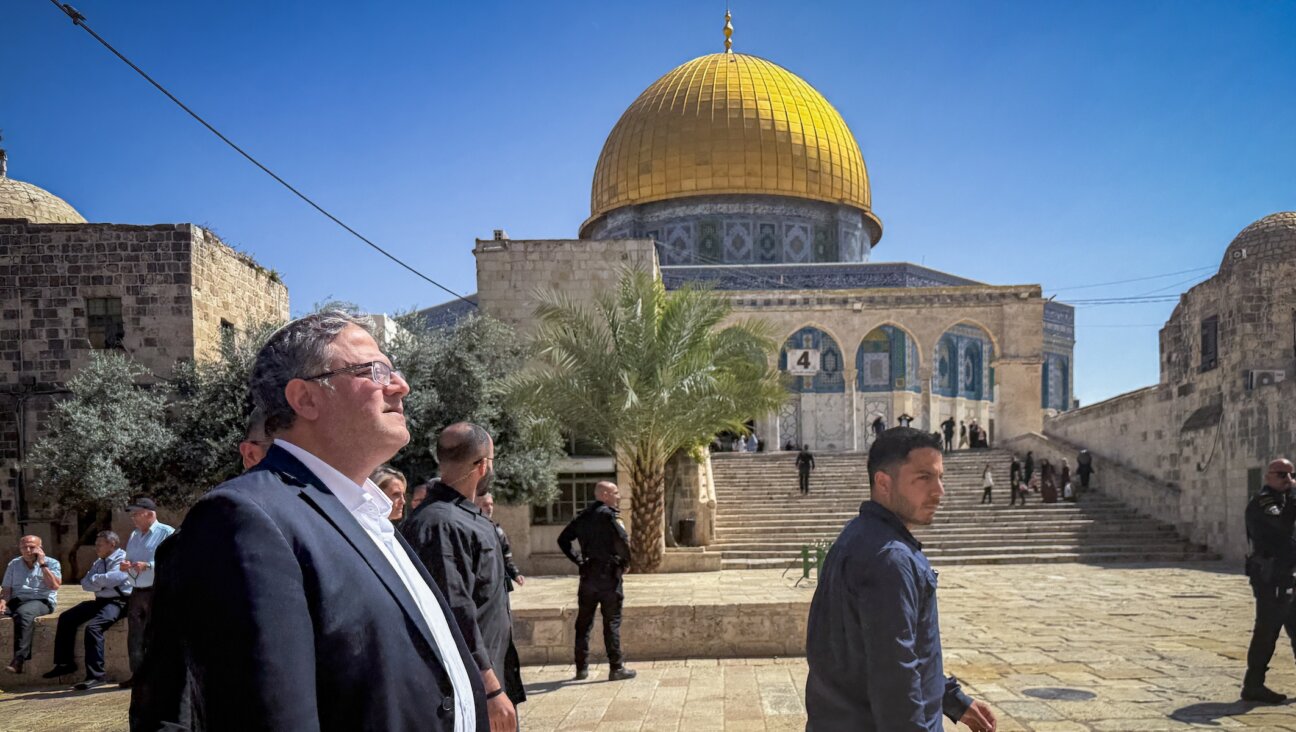“Adolf Eichmann Trial: Fifty Years Later” a Pivotal Revisit to the Jewish Museum Ballroom

Abraham Foxman and Tami Raveh Image by karen leon
“Israel of the post-Eichmann trial [era] was forever different,” said Ido Aharoni, consul general of Israel in New York, at “Adolf Eichmann Trial: Fifty Years Later,” held at the Jewish Museum on February 13. The event was co-sponsored by the Israel Consulate and the Anti-Defamation League’s New York region. Aharoni continued: “It was the Eichmann trial that reminded us Israelis that for more than a decade — since the establishment of the State of Israel, in 1948 — we had been fearful of touching our own past…. The trial served as the first and most significant opportunity for the champions of the remarkable Zionist rebirth to comfort the survivors who silently lived among us.” ADL National Director Abraham Foxman welcomed an audience packed into the museum’s ballroom, where bleacher seating had been installed to accommodate the crowd. All were spellbound by the recollections of Tami Raveh, daughter of Gideon Hausner, who was attorney general of the State of Israel from 1960 to 1963 and chief prosecutor in the Eichmann trial, and Itay Arad, grandson of Isser Harel, who was director of the Mossad from 1952 to 1963 and commander-in-chief of the Eichmann Operation.
“I want to focus on ‘Operation Eichmann’ — how they eventually got him,” Arad said. “I stand here on behalf of my grandfather, who was head of Mossad and was actually in Buenos Aires during the operation. He died eight years ago, at 90.” Arad continued: “The source was Luther Herman, a half-Jew in Buenos Aires [who was] married to a non-Jew and [was] a member of the ex-pat German community. No one knew he was a Jew. His daughter came home with a fellow named Nick Eichmann — not as famous a name then. He overheard Nick tell his daughter that his father was an important man in the German army and during World War II he was head of [the operation] that enabled the Germans to finish the job that [Hitler] started. Herman contacted Dr. Fritz Bauer, who used to be a judge and prosecutor in Germany. Afraid that the German Embassy in Buenos Aires [might alert Eichmann], Bauer [notified] the Mossad that Eichmann was living under the name of Ricardo Clemens. There were no current photos of Eichmann… there were no regular flights to Argentina and they needed a reason to go there. They found one. Abba Eban [then Israel’s minister of foreign affairs] was invited to Argentina to celebrate the country’s 150th anniversary.”

Abraham Foxman and Tami Raveh Image by karen leon
“I was a 14-year-old teenager in Jerusalem,” flame-haired Raveh began. “My father was born in Lvov. My grandfather, Dov Bernard [Hausner] was a member of the Polish Parliament [or] Sejm and in 1927 was appointed Poland’s ambassador to Palestine. My family did not experience the Holocaust. Yet my father, a young lawyer, became the speaker for the 6 Million. The Eichmann trial was the first time — and only time — that the attorney general decided to appear himself as chief prosecutor in the courtroom…. He interviewed Holocaust survivors in our living room [and] decided that this would be different from the Nuremberg Trials. It would have been easier to provide two or three decrees signed by Eichmann to the charges and convict him. Had that been done, my father said, he ‘would have missed the one and only opportunity to show the people of Israel and the rest of the world the horrors of the Holocaust.’ He said, ‘Let the survivors speak and describe what happened to them.’”
Raveh continued: “Finding the right witnesses was a tough problem, Many survivors hesitated, and some refused to come forward to testify…. The survivors came to Israel via Cyprus, straight from the death camps, and were not warmly received by the Israelis.” One survivor her father convinced to testify was Rivka Yosselevska, who described being taken to the forest, shot and thrown into a pit. She survived, climbed out and said she could not come forward to testify because her family did not believe her.
Video footage from the trial was shown at the event at the Jewish Museum. One film clip depicted the trial witness known as “Ka-Tzetnik” (a generic label for concentration camp survivors), who had met Eichmann face to face and who described Auschwitz as “the other planet.” He had a stroke on the stand while testifying. Another clip showed Israeli police captain and inspector Mickey Goldman sitting near Hausner and listening to a witness, Dr. Buzminsky, describing medical treatment he administered to a boy who had received 80 lashes from a Nazi officer. Hausner asked Buzminsky to identify the “boy” in the courtroom, and the doctor pointed to Goldman, who was stunned. He was that boy! Until that moment, no one else, other than Hausner, had known that Goldman was a Holocaust survivor.
Reflecting on the trial, Foxman said: “There was the personalization of the Holocaust as one survivor after another testified to the atrocities committed by the Nazis and Eichmann…. These emotions intensified the American Jewish connection to the horror and set the stage for future commitments… whether it is the Holocaust museum in Washington or any of the other institutions devoted to the Shoah around the country or the mandated teaching in many states or the films and oral recordings inspired by Steven Spielberg…. The roots of determination by American Jews to institutionalize and understand the Holocaust in America can be traced back to the [Eichmann] trial, [which] began a slow process that dramatically changed the reality [of the Shoah].”
Eichmann was the only person in the history of the Jewish state ever to receive capital punishment. Goldman dispersed Eichmann’s ashes in the Mediterranean Sea, outside Israel’s territorial waters.
Songs of Love, Sex and Innuendo — A Musical Treat From New York Festival of Song
“There are songs about war and food and travel… but the majority of songs are about love,” writes Steven Blier, artistic director of New York Festival of Song, in the program notes for NYFOS’s February 14 and 16 concerts, “A Modern Person’s Guide to Hooking Up and Breaking Up.” Presented at Merkin Concert Hall, the edgy, funny, poignant and sexy show offered a multi-flavored buffet of relationship bonbons.
There were three curtain calls for the ensemble, which included soprano Anne-Carolyn Bird, mezzo-soprano Liza Forrester, tenors Alex Mansoori and Gennard Lambardozzi, baritone Andrew Garland **, bass-baritone **Adrian Rosas and Blier at the piano. Selections from the cleverly choreographed program included “Standing on the Corner “ from “The Most Happy Fella” (1956), music and lyrics by Frank Loesser; the title song from “The Girls of Summer,” music and lyrics by Stephen Sondheim; “You’d Be Surprised” (1919), music and lyrics by Irving Berlin; “Innocent, Ingénue Baby” (1923), music by George Gershwin and William Daly and lyrics by Brian Hooker; “The Masochism Tango” (1959), music and lyrics by Tom Lehrer, and “C’est La Vie” from “Life Begins at 8:40” (1934), with music by Harold Arlen and lyrics by Ira Gershwin and E.Y. Harburg. Blier told the audience that the program, with its double entendre lyrics (that last song included the line “In a cute little love nest for three”), seemingly shocked the audience at the recent Boston show.
The Forward is free to read, but it isn’t free to produce

I hope you appreciated this article. Before you go, I’d like to ask you to please support the Forward.
Now more than ever, American Jews need independent news they can trust, with reporting driven by truth, not ideology. We serve you, not any ideological agenda.
At a time when other newsrooms are closing or cutting back, the Forward has removed its paywall and invested additional resources to report on the ground from Israel and around the U.S. on the impact of the war, rising antisemitism and polarized discourse.
This is a great time to support independent Jewish journalism you rely on. Make a Passover gift today!
— Rachel Fishman Feddersen, Publisher and CEO
Most Popular
- 1

News Student protesters being deported are not ‘martyrs and heroes,’ says former antisemitism envoy
- 2

Opinion My Jewish moms group ousted me because I work for J Street. Is this what communal life has come to?
- 3

News Who is Alan Garber, the Jewish Harvard president who stood up to Trump over antisemitism?
- 4

Fast Forward Suspected arsonist intended to beat Gov. Josh Shapiro with a sledgehammer, investigators say
In Case You Missed It
-

Fast Forward Chicago man charged with hate crime for attack of two Jewish DePaul students
-

Fast Forward In the ashes of the governor’s mansion, clues to a mystery about Josh Shapiro’s Passover Seder
-

Fast Forward Itamar Ben-Gvir is coming to America, with stops at Yale and in New York City already set
-

Fast Forward Texas Jews split as lawmakers sign off on $1B private school voucher program
-
Shop the Forward Store
100% of profits support our journalism
Republish This Story
Please read before republishing
We’re happy to make this story available to republish for free, unless it originated with JTA, Haaretz or another publication (as indicated on the article) and as long as you follow our guidelines.
You must comply with the following:
- Credit the Forward
- Retain our pixel
- Preserve our canonical link in Google search
- Add a noindex tag in Google search
See our full guidelines for more information, and this guide for detail about canonical URLs.
To republish, copy the HTML by clicking on the yellow button to the right; it includes our tracking pixel, all paragraph styles and hyperlinks, the author byline and credit to the Forward. It does not include images; to avoid copyright violations, you must add them manually, following our guidelines. Please email us at [email protected], subject line “republish,” with any questions or to let us know what stories you’re picking up.













